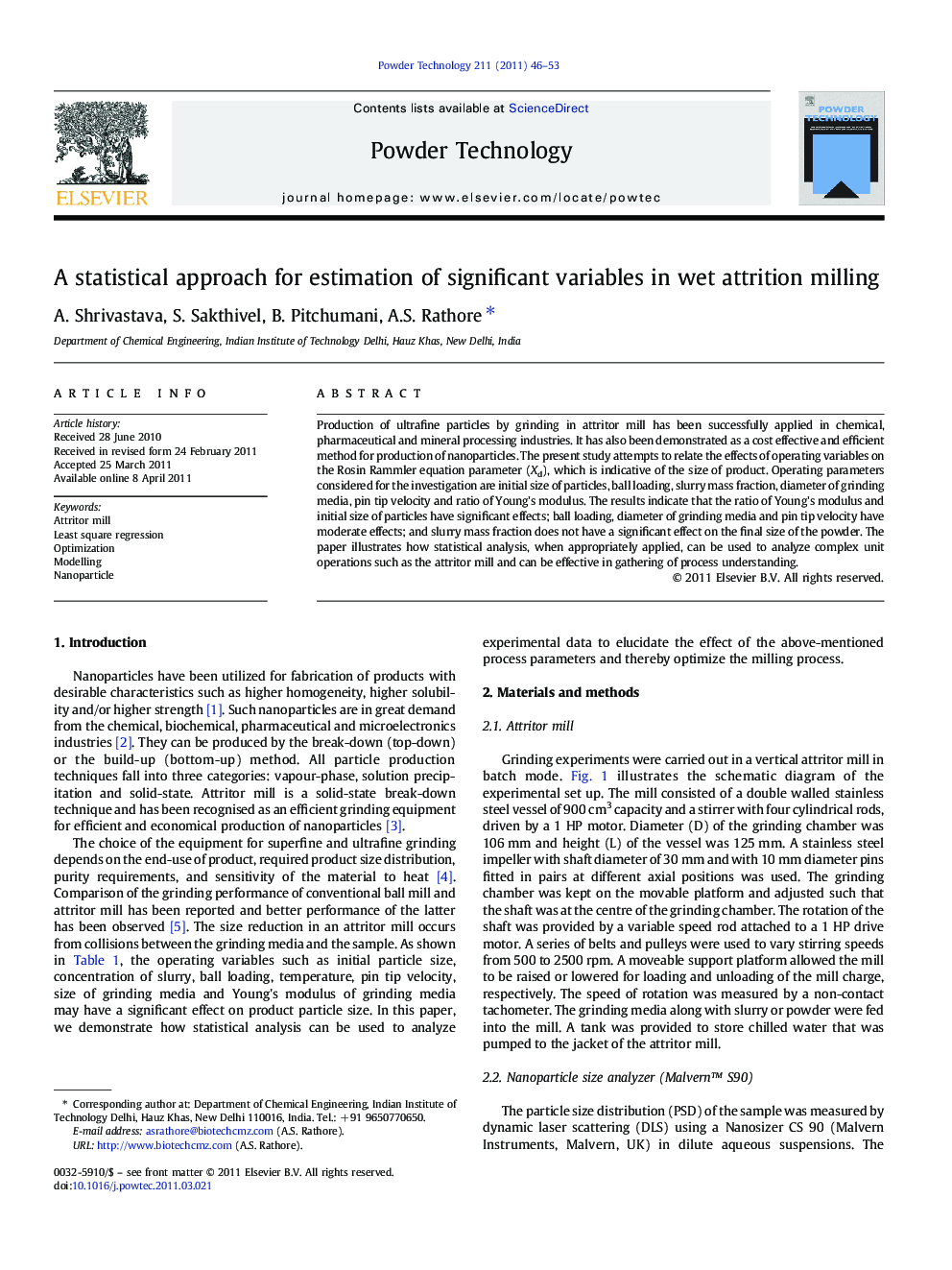| Article ID | Journal | Published Year | Pages | File Type |
|---|---|---|---|---|
| 237544 | Powder Technology | 2011 | 8 Pages |
Production of ultrafine particles by grinding in attritor mill has been successfully applied in chemical, pharmaceutical and mineral processing industries. It has also been demonstrated as a cost effective and efficient method for production of nanoparticles. The present study attempts to relate the effects of operating variables on the Rosin Rammler equation parameter (Xd), which is indicative of the size of product. Operating parameters considered for the investigation are initial size of particles, ball loading, slurry mass fraction, diameter of grinding media, pin tip velocity and ratio of Young's modulus. The results indicate that the ratio of Young's modulus and initial size of particles have significant effects; ball loading, diameter of grinding media and pin tip velocity have moderate effects; and slurry mass fraction does not have a significant effect on the final size of the powder. The paper illustrates how statistical analysis, when appropriately applied, can be used to analyze complex unit operations such as the attritor mill and can be effective in gathering of process understanding.
Graphical abstractThe aim of this study is to study the effect of operating parameters involved in attrition milling. Study relates feed particle size, ratio of Young's modulus, ball loading, diameter of grinding media and pin tip velocity with the product particle size.Figure optionsDownload full-size imageDownload as PowerPoint slideResearch Highlights► In wet attrition milling, the following effects are observed on Rosin Rammler equation parameter (Xd). ► Ratio of Young's Modulus and initial size of particles have a significant impact. ► Ball loading, diameter of grinding media and pin tip velocity have moderate impact. ► Slurry mass fraction dose not have a significant impact.
